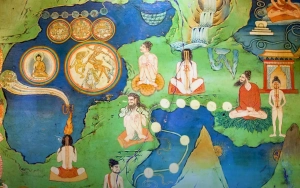
In today’s fast-paced world, stress and emotional turbulence have become common experiences. Managing these emotions effectively is crucial for maintaining mental and physical health. The HeartMath Institute, a pioneer in the study of the heart-brain connection, has developed simple yet powerful techniques to help individuals cultivate emotional resilience and well-being. One of the most accessible and widely practiced techniques is Heart-Focused Breathing, an evolution of their earlier Freeze-Frame method. This paper introduces Heart-Focused Breathing, offering a step-by-step guide to help you integrate this practice into your daily life.
The Science Behind Heart-Focused Breathing
Heart Rate Variability (HRV) and Its Importance
Heart Rate Variability (HRV) refers to the variation in time between each heartbeat. Contrary to popular belief, a healthy heart does not beat with a perfectly regular rhythm. Instead, the intervals between heartbeats vary naturally, and this variability is a key indicator of autonomic nervous system balance and overall health.
HRV is influenced by two branches of the autonomic nervous system: the sympathetic nervous system, which accelerates the heart rate, and the parasympathetic nervous system, which slows it down. A high HRV generally indicates a robust ability to adapt to stress and environmental changes, while a low HRV can be a sign of stress, fatigue, or potential health issues.
Heart-Focused Breathing and HRV
Heart-Focused Breathing specifically aims to increase HRV by creating a coherent state in the heart and brain. When you practice this technique, you engage in slow, deep breathing, which activates the parasympathetic nervous system. This helps to counteract the stress-induced dominance of the sympathetic nervous system, leading to a more balanced autonomic state.
By focusing on your heart and generating positive emotions, Heart-Focused Breathing promotes a state of physiological coherence, where HRV becomes more rhythmic and ordered. This coherent state is associated with improved cognitive function, enhanced emotional regulation, and greater resilience to stress.
Research conducted by the HeartMath Institute has shown that individuals who regularly practice techniques that improve HRV, such as Heart-Focused Breathing, experience significant benefits, including reduced anxiety, better sleep, and improved cardiovascular health. Moreover, higher HRV is linked to greater emotional flexibility, enabling you to respond to life’s challenges with greater calmness and clarity.
Step-by-Step Guide to Heart-Focused Breathing
-
Shift Your Attention to Your Heart:
- Begin by finding a comfortable position, whether sitting or standing.
- Gently close your eyes if you feel comfortable doing so.
- Focus your attention on the area around your heart. Imagine your breath flowing in and out through your heart or chest area. This helps to center your energy and bring your awareness away from any distracting thoughts or external stimuli.
-
Breathe Slowly and Deeply:
- Start taking slow, deep breaths. Inhale for about 5 seconds, and then exhale for 5 seconds.
- Maintain this steady rhythm of breathing, allowing each breath to be smooth and unforced. The goal is to breathe at a pace that feels natural and comfortable for you.
-
Activate a Positive Feeling:
- As you continue to breathe deeply, recall a positive experience or think about something that fills you with appreciation, love, or calmness. This could be a memory of a loved one, a beautiful place, or a moment of personal achievement.
- Try to fully immerse yourself in this positive feeling. Let it fill your heart and mind, enhancing the coherence between your heart and brain.
-
Sustain the Feeling and Breath:
- Maintain this positive feeling as you continue to breathe slowly and deeply.
- Focus on sustaining this heart-centered emotion for as long as you can, allowing it to replace any stress or negative emotions you may have been experiencing.
-
Return to Your Day:
- When you feel ready, gradually shift your focus back to your surroundings, keeping the sense of calm and positivity with you as you go about your day.
- With regular practice, you’ll find it easier to access this state of coherence, even in challenging situations.
Benefits of Heart-Focused Breathing
Heart-Focused Breathing can be practiced anytime, anywhere, making it an ideal tool for managing stress on the go. Regular practice has been shown to improve emotional regulation, enhance focus, and support overall well-being. By creating a coherent state in your body, you can reduce the negative effects of stress, increase resilience, and cultivate a deeper sense of inner peace.
Moreover, by increasing HRV through this practice, you not only enhance your ability to handle stress but also support cardiovascular health, improve immune function, and foster better mental clarity and decision-making.
Other Ways to Improve HRV
While Heart-Focused Breathing is a powerful technique for enhancing HRV, there are several other practices that can also contribute to improving this important marker of health:
-
Regular Physical Activity:
- Engaging in regular exercise, particularly aerobic activities like walking, running, swimming, or cycling, has been shown to increase HRV. Exercise improves cardiovascular fitness, which in turn helps maintain a balanced autonomic nervous system.
-
Adequate Sleep:
- Quality sleep is essential for maintaining high HRV. Establishing a consistent sleep routine, ensuring a comfortable sleep environment, and addressing any sleep disorders can significantly impact HRV.
-
Mindfulness and Meditation:
- Practices like mindfulness meditation, yoga, and tai chi are known to reduce stress and enhance parasympathetic activity, leading to increased HRV. These practices promote relaxation and help the body return to a balanced state.
-
Nutrition and Hydration:
- A balanced diet rich in fruits, vegetables, whole grains, and healthy fats supports overall heart health and can positively influence HRV. Staying hydrated is also crucial, as dehydration can lower HRV.
-
Stress Management:
- Chronic stress is a major contributor to low HRV. Techniques such as progressive muscle relaxation, journaling, spending time in nature, and maintaining strong social connections can help manage stress and improve HRV.
-
Avoiding Stimulants:
- Reducing or eliminating the intake of stimulants such as caffeine, nicotine, and alcohol can help improve HRV. These substances can increase sympathetic nervous system activity and decrease HRV.
-
Breath Training:
- In addition to Heart-Focused Breathing, other breathwork practices like diaphragmatic breathing, alternate nostril breathing, and paced breathing can help enhance HRV by promoting parasympathetic activation.
By incorporating these practices into your daily routine, you can further support your autonomic nervous system, improve your HRV, and enhance your overall well-being.
Heart-Focused Breathing is a simple yet effective technique that empowers individuals to take control of their emotional state and enhance their overall quality of life. Whether you’re dealing with daily stress or seeking to improve your emotional resilience, this technique offers a practical solution that can be easily integrated into your routine. Combined with other lifestyle practices that support HRV, Heart-Focused Breathing can help you achieve a higher state of coherence, well-being, and resilience.






